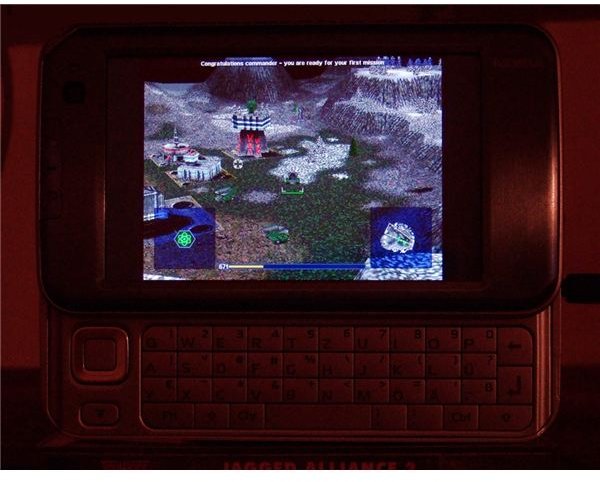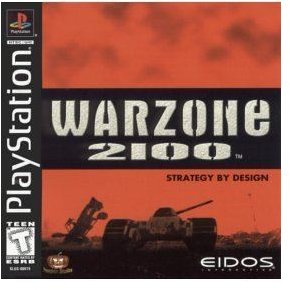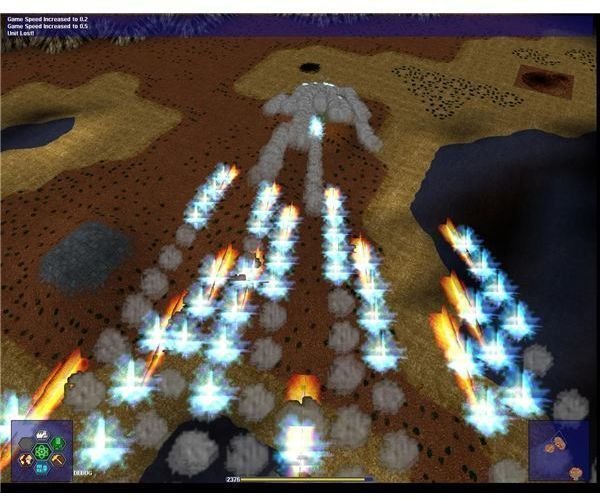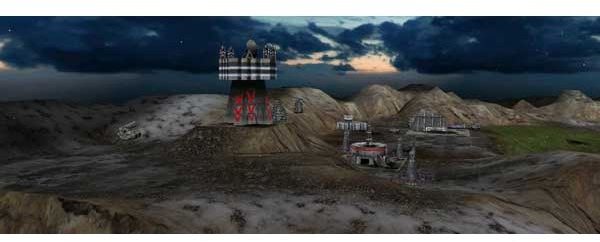Warzone 2100 - A story of wars, lobbies, and love.

Introduction to the Warzone Development History
The year was 1999.
The world was a different place. We didn’t have the Web 2.0 like Facebook, Myspace, or Brighthub. Instead, we had the Web 1.0, the Dot Com Bubble, and the Fear of Y2K.
In a way, you could say Warzone was fueled by that Y2K, if you also threw in Terminator’s Skynet, and HAL from 2001. Did we m
ention over the years that Warzone got mobile-ized?
In case you don’t know what Warzone is, head here for a review of it.
A big thanks goes out to developers of Wz2100, especially Zarel, who was the primary source for this recollection.
And now, the History of Warzone 2100.
The Rise and Fall of Pumpkin Studios. Eidos, and Pivotal involved.
Once upon a time, there was a company. This company, like many others in the business (And if you have no idea, consider making something that requires more investment for the same work on a bigger scale, like an MMO), took many months of effort, and created a video game.
Remember, the year is 1999. The mainstream world of PCs and internet was booming, and along with it came the fear of Comput

er control and chaos. The fears ranged greatly. Some were with the Y2K bug in old computers, and that The fear of Artificial Intelligence becoming Intelligent, and self-aware. The well marketed Terminator, with our favorite ‘Guvanator’ made millions on that fear, so what if it is was just one more game to join the band wagon?
For the uninformed, Warzone 2100, developed by the defunct Pumpkin Studios, was a favorite RTS of the time. Released on the PC and Playstation 1, it told the story of the last remnant of banded humans, working together to defeat The New Paradigm, The Collective, and their final enemy, Nexus. The game was a hit and grew a strong fanbase. Unfortuantly, a downward spiral was bound to come for the game.
At the time, the game was co-owned by two groups: Pumpkin Studios (the game developers), and Eidos Interactive. (Publishers and general ‘Sponsors’ to the game).
Fastforward a year, just around March of 2000. Patch 1.10 final was released, and Pumpkin Studios ended their support (This is only a year, in a comparison to games like Diablo 2, which 9 years later are still supported). Soon afterward, Eidos Interactive closed the doors of Pumpkin Studios.Warzone 2100 was considered a successful game, but the deed had been done.
An interesting note few know is that Pumpkin Studios lives on today as Pivotal Games, if you ignore the fact they closed a year ago. soon after they closed, the group reformed and decided to develop third person shooters under, once again, Eidos Interactive. Pivotal Games closed its doors just 1 year ago this month, following a series of rated “mediocre” games called Conflict.
Maybe we should also note that (at the time), Warzone 2100 was one of the first 3D RTS, and widely considered a pioneer in the field, which supports the surprising fact of its short retail life. However, Warzone lives on.
The Community gets involved. Custom patches, Lobbies and Wars
Where Pumpkin and Pivotal failed, the community stepped in, and it was no easy task. As said by developers of the current Warzone 2100 project, coding for the game is very difficult to modify and change. They even read footnotes by the developers themselves in the source code, talking about how touching the camera feature without breaking it was nearly impossible.
R

ight after Pumpkin Studios closed, a group of fans decided to release some more patches on their own, customized to use their own game lobby systems (instead of Gamespy’s system) and including some unique features like landmines. This group, was known as N.E.W.S.T
N.E.W.S.T. took off where Pumpkin left, and continued to actively support and develop the game. Meanwhile, other groups began to show up. These groups, all fighting to set the future of Warzone 2100 in their own design and image (using what little resources they had without source code). Soon after the wars broke out, N.E.W.S.T. sought to claim the throne, renaming itself Pumpkin-2. Pumpkin-2 developed anti-cheating software for Warzone, kept the game alive, and stood out on top.
Soon after this though, Pumpkin-2 decided it had bigger fish to catch, and decided to go all out and attempt a sequel: Warzone 2200.
Meanwhile however, on a popular Warzone 2100 hub known as RealTimeStrategies.net, people starting throwing the idea around of getting Eidos to release the source code.
And so, within the depths of the realtimestrategies.net forums, the petition was born.
The Petition is Drawn: Let my Source Code Go!
Petions come in many forms, shapes, and sizes. Some petition for independence, others for service. In the end, they seek justice in a form others feel has not been given.
You can consider it the same concept, as it seeks the justice to do what Pumpkin Studios decided to leave behind to its own su

pporters.
It all stated at the old RealTimeStrategies.net Forums (Which are now defunct, but an interesting record of past records can be found on the Pumpkin-2 forums), where a few fellows, looking to expand and enhance Warzone, wanted to get the source code to do just that. At the same time, others began to forget Warzone and move on to its sequel at work, Warzone 2200
So, the petition was sent in, and had quite a bit of fanbase support. To the surprise of many, it got out to more than 1,500 supporters.
Well, it seems like it could do it, and it did.
The Source Code is Released, The Resurrection
On December 6th, 2004, everything changed.
Eidos Interactive, in support of the petition sent out by Pumpkin-2, released the source code for Warzone 2100 under the GNU public license. This however did not include the sequences of video and musical content. Still, it was a lot to work with. Now official patches come out, really hammering out the problems with Warzone.
I

nterestingly enough, the source code found itself FTP uploaded to a website, which in turn spread out to other sites such as realtimestrategies.net however over time, these sites have all but vanished.
The only thing was, the playerbase had vanished.
Over the time the petition worked on, the gaming world moved on and many had left Warzone behind. Warzone 2200 had died, but that’s another story to tell.
A fair, but diminished remnant now was left. A different group of coders decided to take the source code and start compiling it into future versions, they (Finding themselves as the only group of coders left!) decided to form the now current group: The Warzone 2100 Resurrection team.
Where is Warzone now?
It was a long fight, but in the end, the fanbase had triumphed. In June of 2008, coicincidentally two months before Pumpkin Studio’s renaming (Pivotal Games) closed, Eidos Interactive released the video sequences and as of the latest version of Warzone, you can integrate the videos and music to the singleplayer campaign.
Thus ends the development past of Warzone 2100, and starts the future!
With new features in the works by the WZ2100 Resurrection team, such as an upgraded User Interface, and a completely redone 3d terrain surface, there is plenty of work to do, and lots of potential for a game, even if it’s ten years old seasoned
Since I spoke with Zarel, the developer who gave me most of the information, he told me that Warzone’s latest update would be out within several weeks, and has since been released. It contains bugfixes and updates, where the major updates will be coming through 2009 and possible 2010
Stay tuned here at Warzone 2100 official home!

